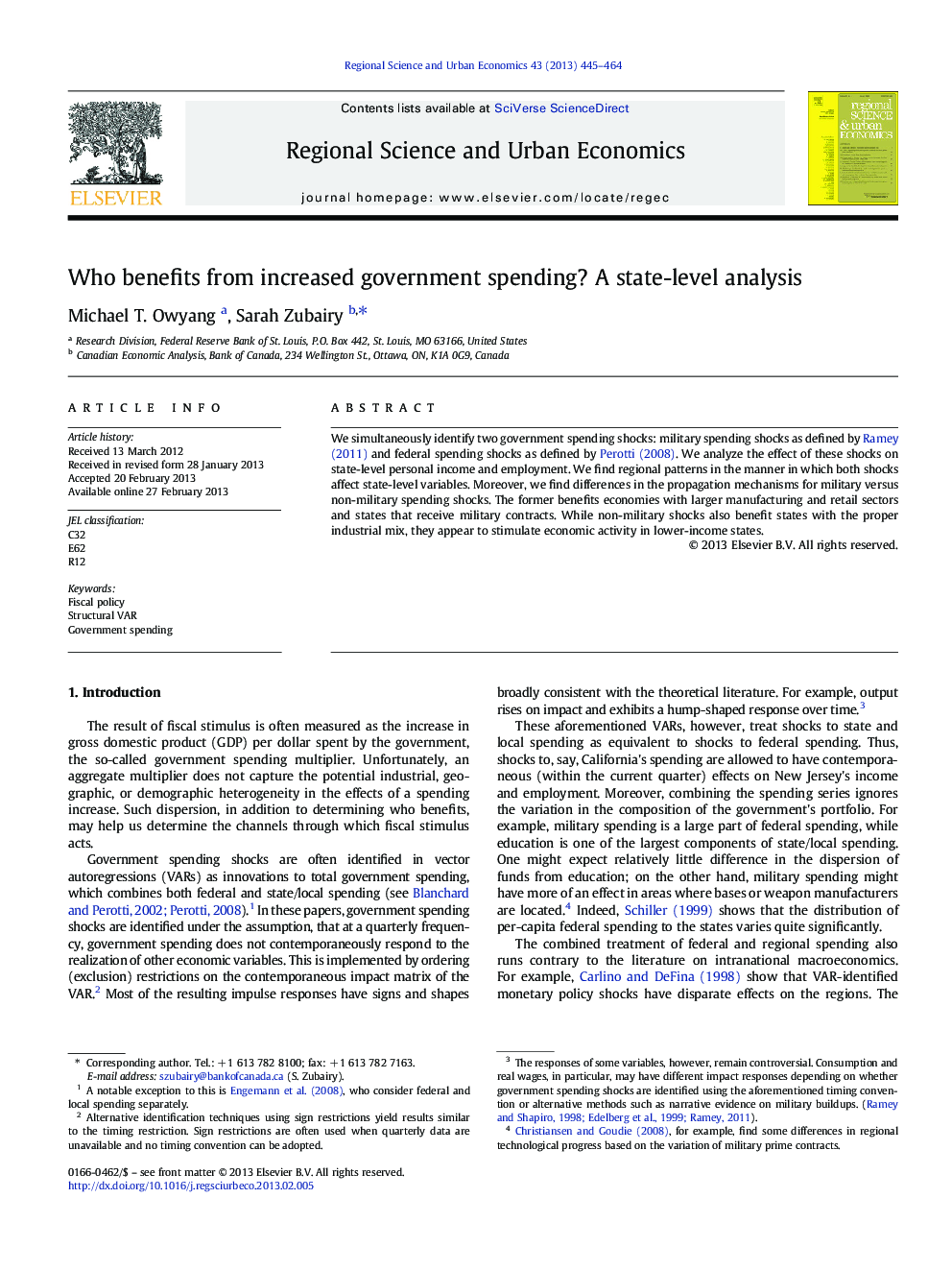| Article ID | Journal | Published Year | Pages | File Type |
|---|---|---|---|---|
| 983787 | Regional Science and Urban Economics | 2013 | 20 Pages |
We simultaneously identify two government spending shocks: military spending shocks as defined by Ramey (2011) and federal spending shocks as defined by Perotti (2008). We analyze the effect of these shocks on state-level personal income and employment. We find regional patterns in the manner in which both shocks affect state-level variables. Moreover, we find differences in the propagation mechanisms for military versus non-military spending shocks. The former benefits economies with larger manufacturing and retail sectors and states that receive military contracts. While non-military shocks also benefit states with the proper industrial mix, they appear to stimulate economic activity in lower-income states.
•We identify military and non-military federal spending shocks.•We analyze their effect on state-level personal income and employment.•There are regional patterns in which both shocks affect state-level variables.•Industry mix is an important explanatory variable for effects of both shocks.•Non-military shocks also stimulate economic activity in lower-income states.
